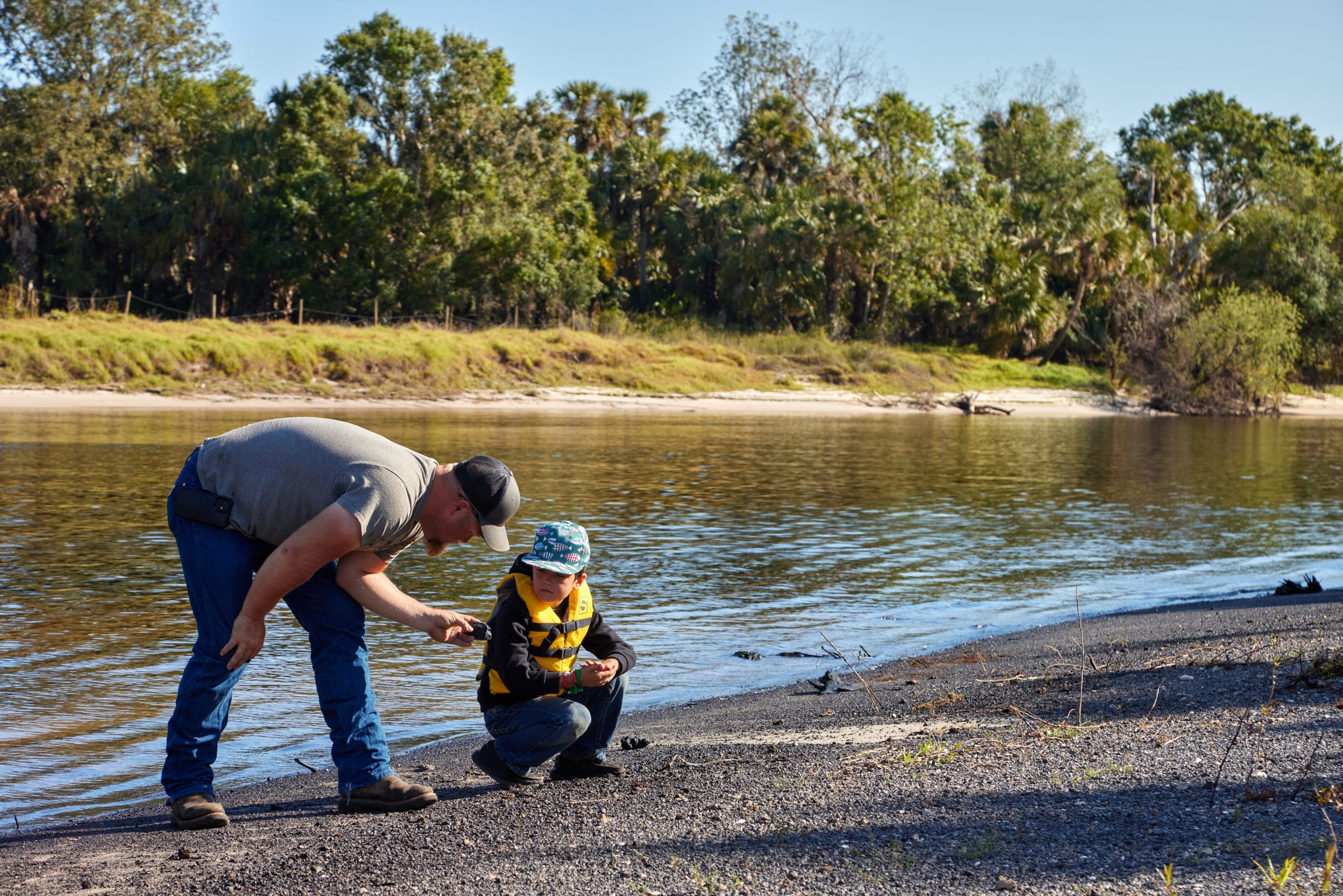The Peace River in southwestern Florida is a gold mine for fossil enthusiasts. Over the centuries, the area that we now call DeSoto County has been fully submerged under ocean water at some points, and dry land as we see it today.
The river’s flow slowly erodes the land in its path, which makes these bits of history more accessible to fossil hunters. The banks of the Peace River are a particularly good source of fossils during the dry season, or fall through early spring.
Teeth are more durable than bone and other parts of ancient animals’ bodies, so they are the most common finds. They certainly aren’t the only fossils you might come across, though, and the variety of fossilized teeth to uncover is staggering.
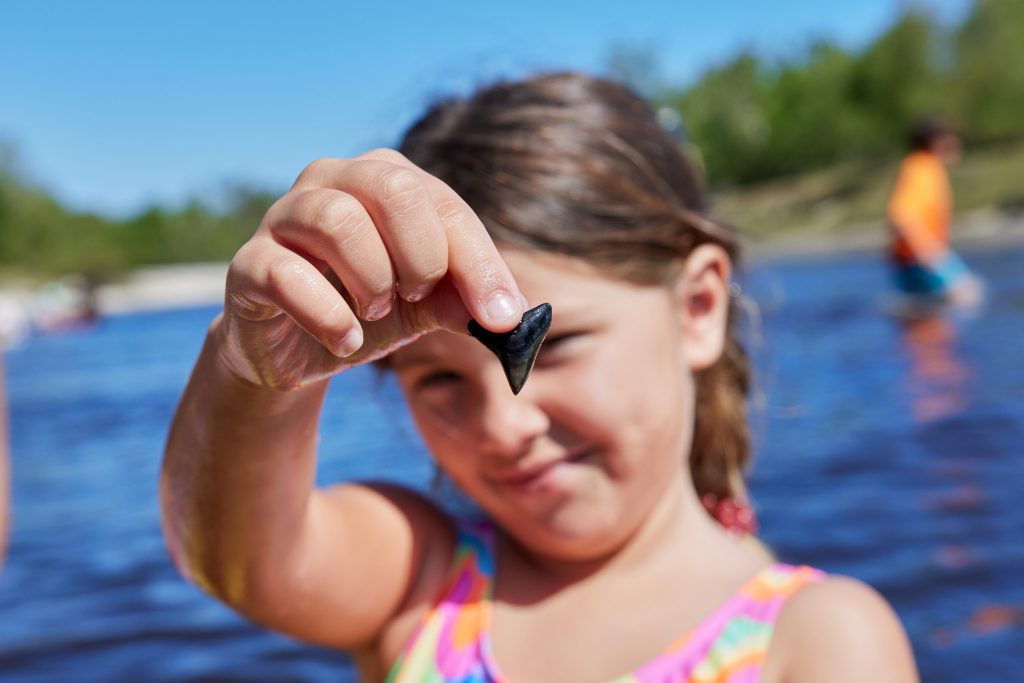
Megalodon
The Carcharodon shark, also known as the megalodon, is famous for being one of the largest and most powerful predators our earth has seen throughout history. It went extinct about 1.5 million years ago, but you can still find evidence of its reign here. Measuring 55 to 60 feet in length, its teeth are also huge compared to its modern relatives. A single tooth can be up to 7 inches long!
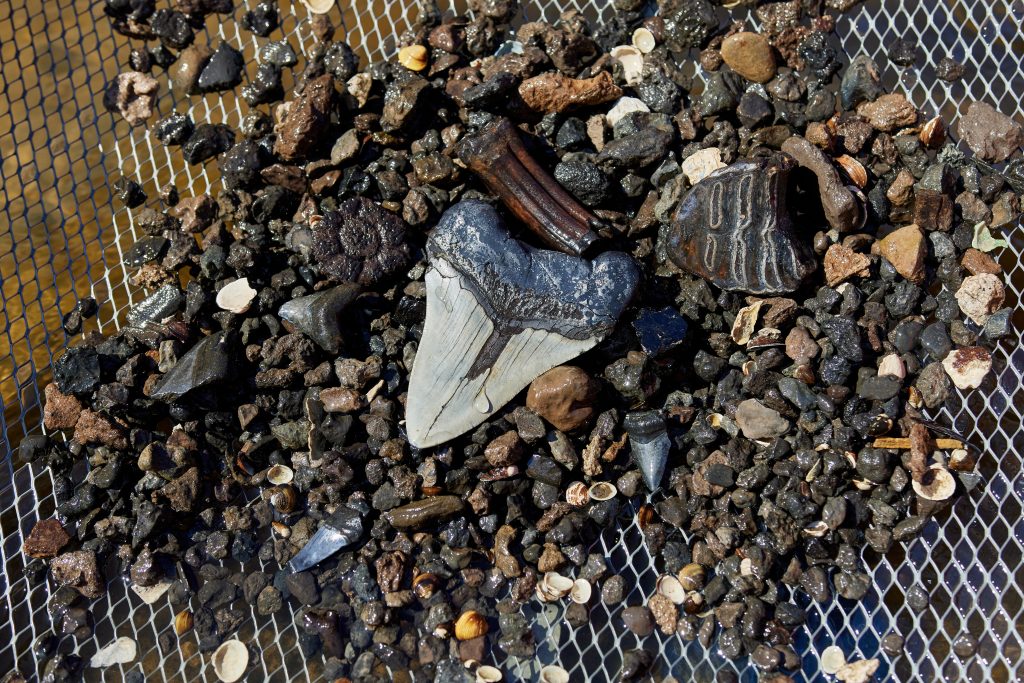
Other Shark Species
The shores of the Peace River have an abundance of shark teeth to find beyond the massive megalodon specimens. You’ll come across lemon, bull, dusky, tiger, snaggletooth, and sharp-nosed shark teeth, just to name a few. Teeth from these species of sharks can usually be spotted without specialized equipment. But, if you bring along tools to finely comb through the sediment along the river, you might find evidence of much smaller species.
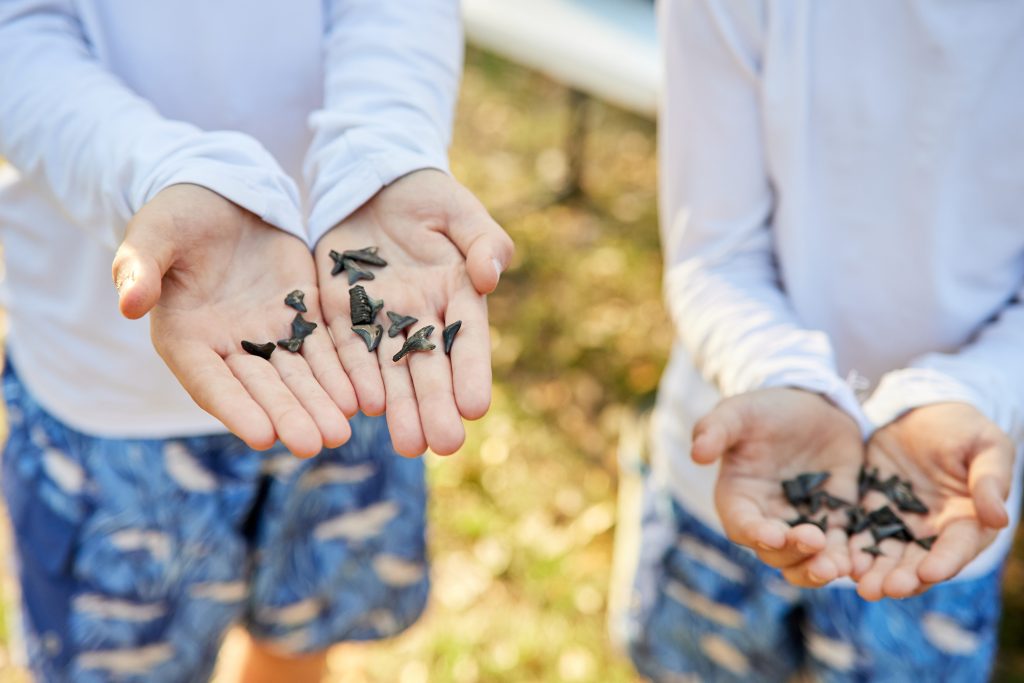
Ice Age Land Mammals
While less common than shark teeth, fossils of mammals from the Ice Age, or Pleistocene epoch, also lie in the Peace River’s sediment for dedicated fossil hunters to find. Some of these animals still have members of their species living today, albeit in other parts of the world: capybaras, llamas, tapirs, wild horses, and jaguars. Evidence of extinct species also lies in fossilized remains: giant sloths, saber-tooth cats, mammoths, and mastodons, for example.
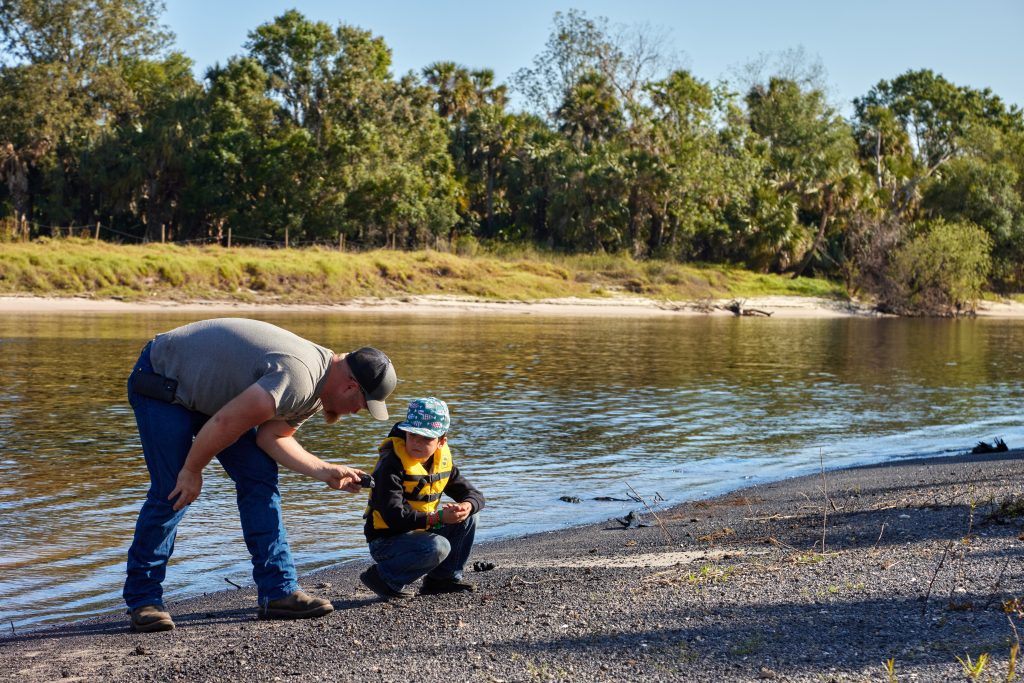
Don’t Forget Your Permit
Collecting fossils of vertebrates in Florida requires a permit, but luckily it’s easy to get one if you plan ahead. Just download and complete an application. Mail your application, along with a photocopy of proper identification and a check or money order for $5 to the address provided by the Florida Museum of Natural History.
If you’d like to maximize your Peace River fossil hunting finds, we suggest a guided fossil hunting tour.
